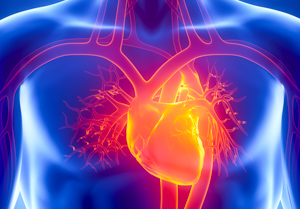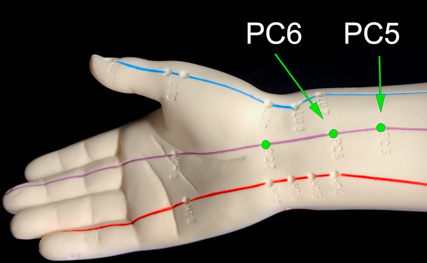Heart Disease
Samples of Online Course Materials

Sample of Course Materials
Congestive Heart Failure (CHF)
Biomedicine
This section focuses on the treatment of chronic CHF. According to the National Heart, Lung, and Blood Institute of the U.S. National Institutes of Health, heart failure (also termed congestive heart failure):
... is a condition in which the heart can't pump enough blood to meet the body's needs. In some cases, the heart can't fill with enough blood. In other cases, the heart can't pump blood to the rest of the body with enough...
More in course materials...
Sample of Course Materials
The NIH (National Institutes of Health) notes in the U.S. National Library of Medicine website:
The weakening of the heart's pumping ability causes:
- Blood and fluid to back up into the lungs
- The buildup of fluid in the feet, ankles and legs [edema]
- Tiredness and shortness of breath
More in course materials...
Sample of Course Materials
Diagnostics include listening to heart sounds, lungs sounds indicating fluid buildup, and swelling of the legs, ankles, feet, abdomen, and veins of the neck. Tests include EKG (electrocardiogram), chest X-ray, a BNP hormone (B-type natriuretic peptide) blood test, echocardiography, ultrasound measurements of lung and heart blood flow, Holter monitor of the heart’s electrical activity over a 24–48 hour period, stress tests, nuclear heart scans, cardiac...
More in course materials...
Sample of Course Materials
CHF Diagnosis
- Heart yin and yang deficiency
- Spleen qi deficiency
Chronic CHF encompasses a complex of diagnostic considerations and there are variations in differential diagnostics per each individual case. Primary diagnostic considerations are heart yin and yang deficiency and spleen qi deficiency. Additional considerations include:
- Water obstruction due to kidney yang deficiency affecting the heart
- Blood stasis due to qi deficiency
- Phlegm dampness obstructing the lungs
Patients often present with shortness of breath (especially upon exertion), fatigue, cyanosis of the lips or nail beds, palpitations…
More in course materials...
Sample of Course Materials
Acupuncture
Pang Family Acupuncture Point Prescription
- PC6, HT7, ST36, SP9, SP6, BL15. Needle BL15 using warm needle moxa technique.
- Auricular points: Shenmen, heart, kidney, spleen. For auricular points, selection of ear tacks for longer-term retention of needles is appropriate.
Acupoints
Neiguan, PC6 (Inner Pass)
This point is 2 cun above the transverse wrist crease, on the line connecting PC3 and PC7, between the tendons of the palmaris longus and flexor carpi radialis.
PC6 is the luo (connecting) point of the pericardium channel. It is the confluent point of the Yinwei vessel (Yin Linking Vessel). PC6 regulates the heart, calms the spirit, regulates qi, suppresses pain...
More in course materials, including herbal medicine...
Sample of Course Materials
Alternate Point Selections
Dirty Water Affecting The Heart Due To Kidney Yang Deficiency
When there is water affecting the heart due to kidney yang deficiency as a predominant presentation, the acupuncture formula may be modified. The principle is to warm the kidney yang and remove the dirty water.
Acupuncture Points:
- HT7 (Shenmen)
- PC6 (Neiguan)
- BL15 (Xinshu)
- SP9 (Shuifen)
- ST36 (Zusanli)
- BL23 (Shenshu)
- GV4 (Mingmen)
This selection includes the addition of BL23 and GV4 to the Pang family point prescription…
More in course materials...
Sample of Research Course Materials
PC5 – PC6 Research
University of California School of Medicine researchers demonstrate that electroacupuncture applied to PC5–PC6 produces “point-specific effects on cardiovascular reflex responses.” [i] The researchers add that sympathetic cardiovascular rostral ventral lateral medulla neurons that respond to both visceral (reflex) and electroacupuncture nerve stimulation “manifest graded responses during stimulation of specific acupoints.” [ii]
The researchers conclude that electroacupuncture "demonstrates a range of cardiovascular responses" and the levels of "visceral reflex pressor responses are influenced by the anatomic location of somatic nerves beneath the acupoints." [iii] They identified specific responses; "deep nerves exerting strong influence and superficial cutaneous nerves demonstrating little or no attenuation of cardiovascular reflex responses." [iv] The results were published in the American Journal of Physiology – Regulatory, Integrative and Comparative Physiology.
The researchers note after testing multiple acupoints, including PC5 and PC6...
References from this section:
i. Tjen-A-Looi SC, Li P, Longhurst JC (2004) Medullary substrate and differential cardiovascular responses during stimulation of specific acupoints. Am J Physiol Regul Integr Comp Physiol ii87: R852-R862.
ii. Ibid.
iii. Ibid.
iv. Ibid.
More in course materials...
Sample of Research Materials On Coronary Heart Disease
Single Photon Emission Computed Tomography
An acupuncture study from the Department of Nuclear Medicine at Peking University Shenzhen Hospital successfully measured improvements in blood flow to the heart for patients with coronary heart disease (CHD).
Using single photon emission computed tomography (SPECT), researchers discovered that needling two specific acupuncture points caused significant improvements in patients with CHD. Acupuncture successfully increased “blood perfusion of ischemic myocardium.”
Coronary heart disease is...
More in course materials, including acupuncture points shown to produce significant patient outcomes...
Sample of Course Materials
Arrhythmias and Pulses
According to Chinese medicine principles, it is usually easier to correct issues of the pulse when the heart beat is irregularly irregular. An irregularly irregular pulse involves irregular beats but they do not have a specific pattern. Generally, a regularly irregular pulse is considered a more intractable disorder. A regularly irregular pulse has a set pattern of irregularity. The following is a list of some of the types of irregular pulses that are commonly seen in a Chinese medicine clinic:
Hesitant-Choppy
In Chinese medicine literature, this pulse is described as a sick silkworm eating a mulberry leaf or a knife scraping bamboo. It is considered the opposite sensation of feeling a slippery pulse. It is uneven, rough, and sometimes irregular in strength and fullness. This may be caused by qi and blood stagnation. If this pulse is thin, it may be caused by jing, blood, or yin deficiency.
Abrupt-Hurried
This pulse is fast and irregularly skips...
More in pulses course materials...
Sample of Course Materials
Hyperactive Heart Yang Tachycardia
A common presentation of tachycardia is due to hyperactivity of heart yang. Common presentations of heart yang pathologically floating upwards include tachycardia, palpitations, insomnia, and mental restlessness. Yin fails to nourish the heart due to yin and blood deficiency. Yin deficiency heat disturbs the chest and often results in mental restlessness. This presentation often results from excess stimulation and output from the sympathetic nervous system (SNS).
Diagnosis
Heart yang floating upwards
Treatment
Anchor the yang, Tonify qi
Pang family herbal formula
This herbal formula tonifies qi and anchors the floating yang. The herbs Ku Shen and Bai Zi Ren have a special function to slow the heart rate.
Dang Shen (Radix Codonopsitis Pilosulae, 党参) 12 grams
Gan Jiang (Dried Rhizoma Zingiberis, 干姜) 2 g
Mai Men Dong (Ophiopogon Root Tuber, 麦门冬) 12 g
Rou Gui Fen (Cortex Cinnamomi Cassiae powder, 肉桂) 1 g
put the cinnamon powder in the tea cup with cover
Sheng Di Huang (Rehmannia Root, 地黄) 12 g
Ku Shen (Radix Sophorae Flavescentis, 苦参) 12 g
Huo Ma Ren (Semen Cannabis Sativae, 火麻仁) 15 g
Huang Lian (Rhizoma Coptidis, 黄连) 4 g
Fu Ling (Sclerotum Poriae Cocos, 茯苓) 30 g
Bai Zi Ren (Semen Platycladi, 柏子仁) 12 g
Long Gu (Os Draconis, 龙骨) 30 g
Zhi Gan Cao (Radix Glycyrrhizae, 炙甘草) 10g
Decoction Instructions
Cover the herbs with water plus 2–3 inches of additional water above the herb line in the pot. This is a large amount of herbs, so this formula can be boiled up to three times per bag. Each dose can be decocted and consumed separately. Alternatively, boil each bag three times and then mix the decocted herb tea from all three boilings. This creates a more even dosage. Then, separate the mixture into three doses. Drink one cup per day during periods of relative remission. During more serious states of the disease, drink one cup in the morning and one cup at night.
Individual Herbs Within The Formula
Dang Shen
Dang Shen is sweet, neutral, and enters the lung and spleen channels. This herb tonifies the middle jiao (burner) and tonifies lung and spleen qi. Dang Shen nourishes blood and promotes the generation of bodily fluids.
Gan Jiang
Gan Jiang is spicy, hot, and enters the heart, lung, spleen, and stomach channels. Gan Jiang warms the middle jiao, expels cold, dispels wind-dampness affecting the lower jiao (burner)...
More in course materials, including acupuncture points and research...

